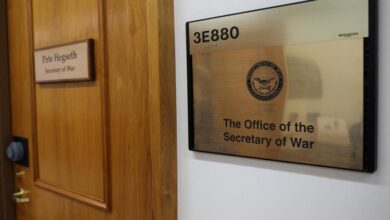More tax dollars for education doesn’t mean better-performing students, shock study finds

WASHINGTON — Money talks, but doesn’t teach.
A stunning new study of more than 12,000 school districts across America obtained by The Post concludes there is no link between increased spending on education and student performance on a key standardized test.
In fact, researchers found a slight negative correlation between education-related salaries and student performance on the National Assessment of Educational Progress (NAEP) test — also known as the Nation’s Report Card, according to the analysis conducted by Open The Books, a pro-transparency organization.
In one case study, education payrolls in Maine rose 19% between 2019 and 2023, but scores on the NAEP plummeted — with state 4th and 8th graders falling from 22nd in the US for reading and math in 2019 to 38th in 2024.
Elsewhere in the Northeast, Maryland’s ranking on the NAEP exam table has dropped by eight spots since 2019, despite launching a decade-long, $30 billion Blueprint for Maryland’s Future education spending plan in 2021.
In one example of a success story, Massachusetts students put up the best scores of any state on NAEP exams in both 2019 and 2024, despite education payrolls across the state rising just 4% between 2019 and 2023.
“America’s parents have a right to know that sending more of their tax dollars to education salaries not only does not guarantee better education performance for their kids but is associated with worse student performance,” said Open The Books CEO John Hart.
The study examined payroll data for teachers, administrators, and other staff, comparing salaries from 2019 to 2023.
Researchers then cross-checked salary information with state results in the NAEP evaluation.
Notably, the study did not differentiate between teacher pay and salary increases for school administrators.
The 10 highest salaries for education positions in the US unearthed by the group ranged from $549,538 to $867,150 in 2023, with the highest pay going to a safety/security official in Texas.
“Teachers are maybe 55 to 60% of the total budget; administrators are on top of that,” explained Eric Hanushek, an economist who was not involved with the Open The Books study but has conducted research on the issue in the past. “The proportion of administrators has been going up.”
Hanushek added that he wasn’t surprised by the study results.
“There’s a difference between increasing salaries across the board and selectively increasing salaries,” he said. “Districts that evaluate teachers and align pay with their evaluations have succeeded in improving student performance.”
“There are three very large districts that have worked to increase teacher salaries, but mostly for the highly effective teachers,” Hanushek added. “So Washington, DC; Dallas, Texas; and now Houston, Texas have worked very hard to provide incentives for the very effective teachers.
“What we see is that those districts have seen students achieve better than other districts that don’t pay attention to paying highly effective teachers.”
Critics of that approach argue that it is exceedingly difficult to measure teachers’ performance, since student performance often hinges on factors outside of educators’ control.
“If my bread and butter is coming from the average of my students’ performance, every child in my room takes on a personal, financial implication,” Tim Cavey, an education-focusd YouTuber from Canada, wrote in a LinkedIn post earlier this year.
“Brilliant students represent higher pay and security. Struggling students represent a tax and a threat to my livelihood.”
One factor that’s not entirely clear is the impact of COVID-19, which led to restrictions on in-person education for several months or years.
Credit to Nypost AND Peoples



